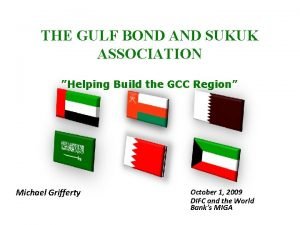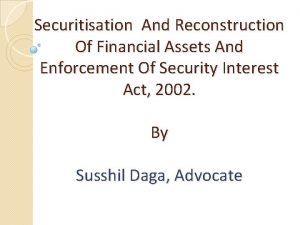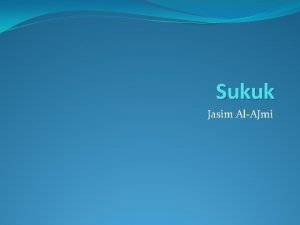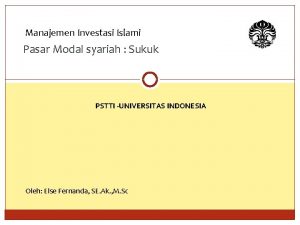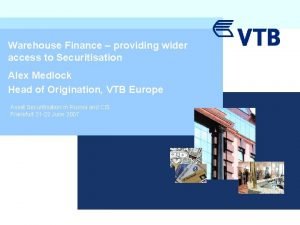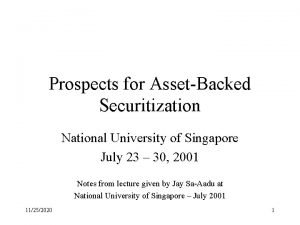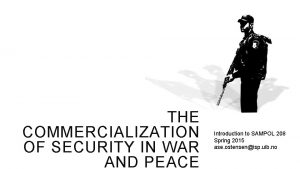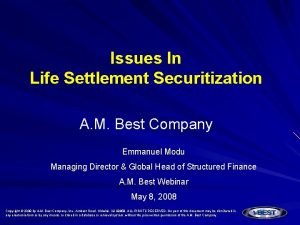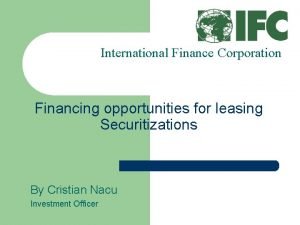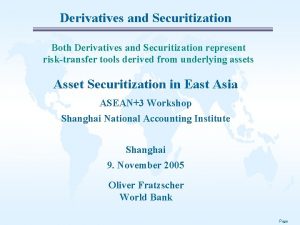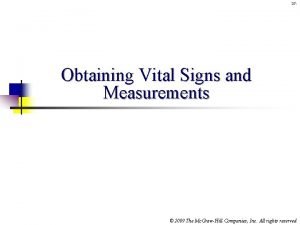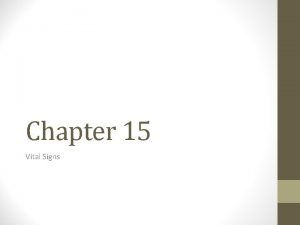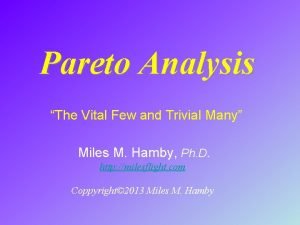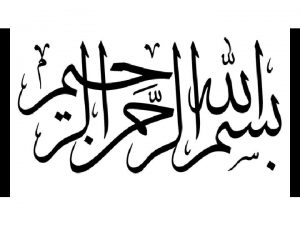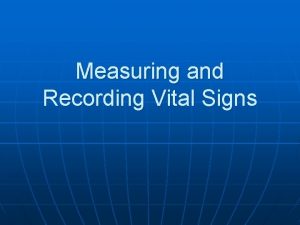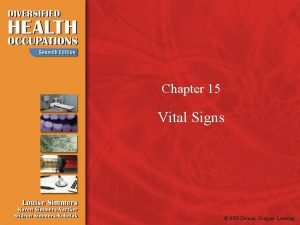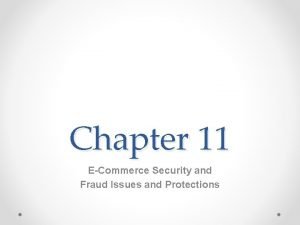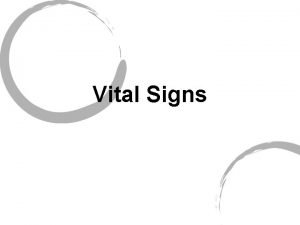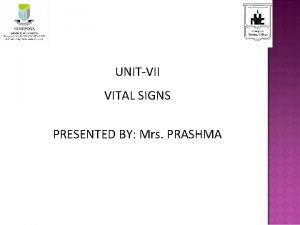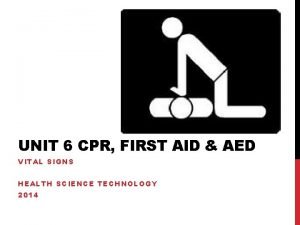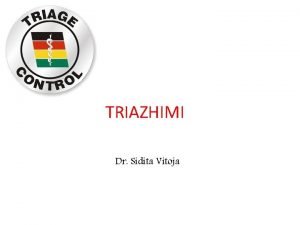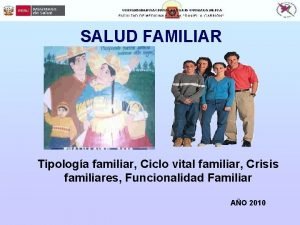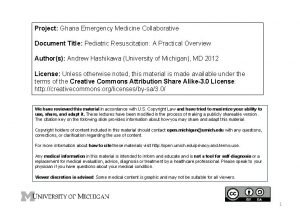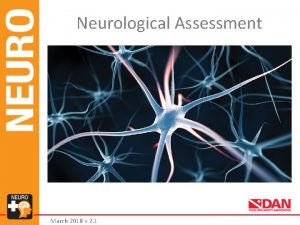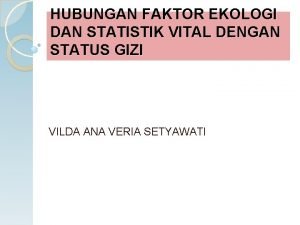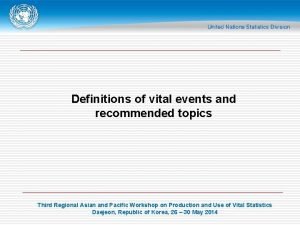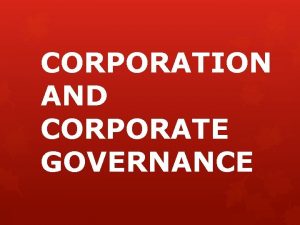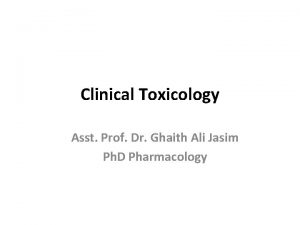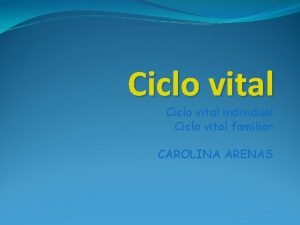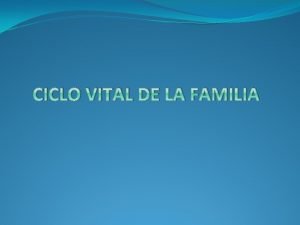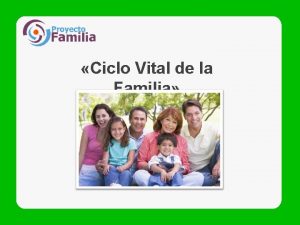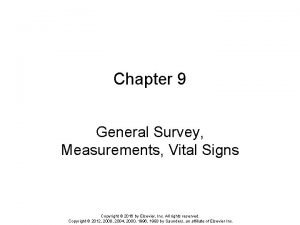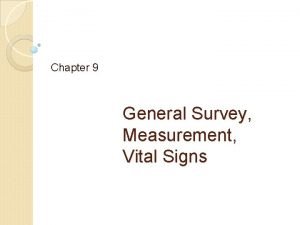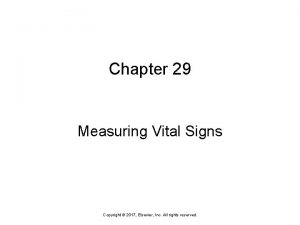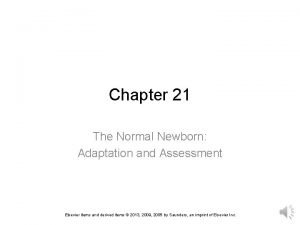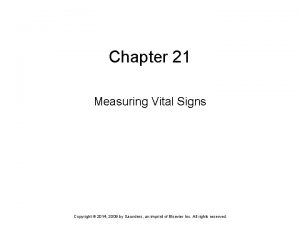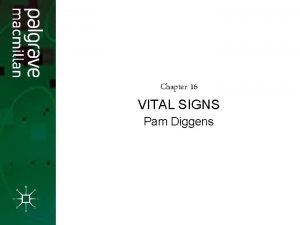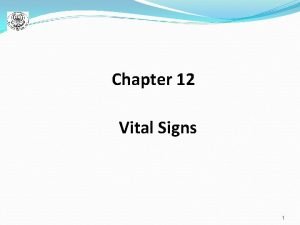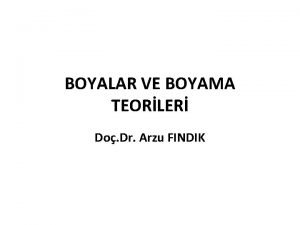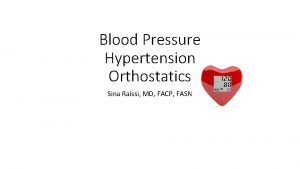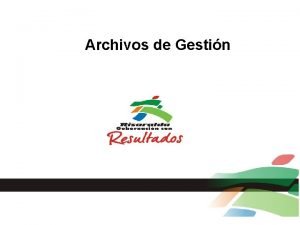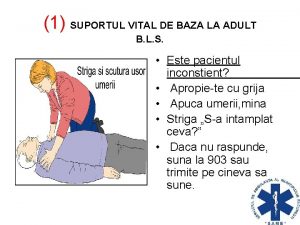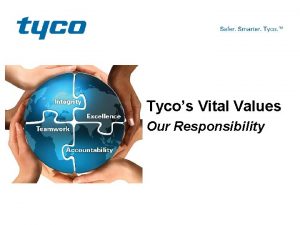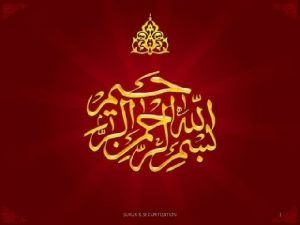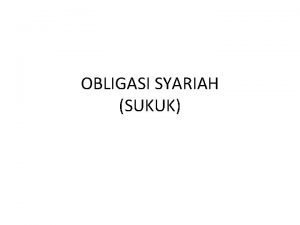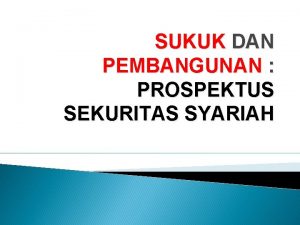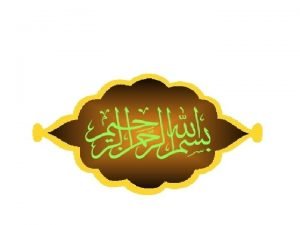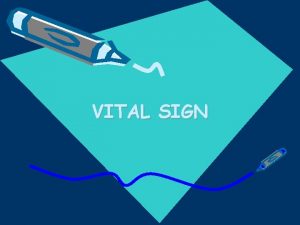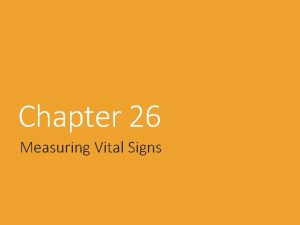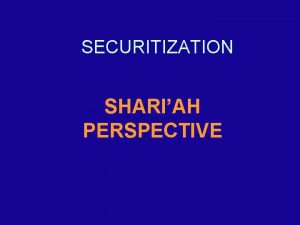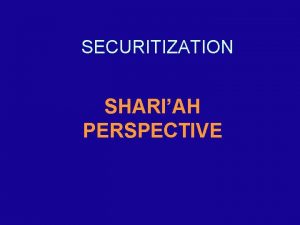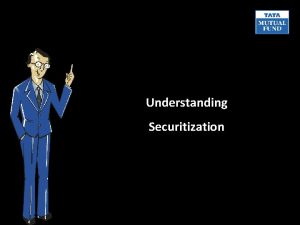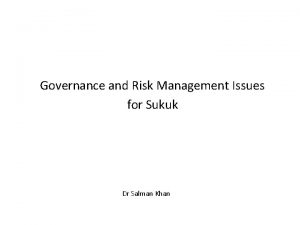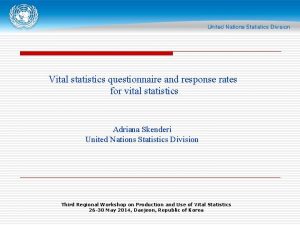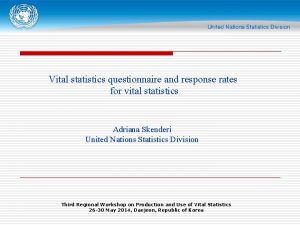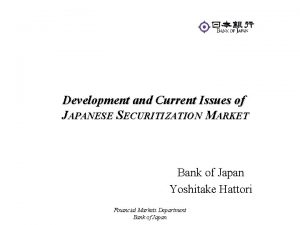SUKUK SECURITIZATION 1 SUKUK AND SECURITIZATION VITAL ISSUES





























































































- Slides: 93

SUKUK & SECURITIZATION 1

SUKUK AND SECURITIZATION VITAL ISSUES IN ISLAMIC CAPITAL MARKETS LECTURE By Dr. Syed Zulfiqar Ali Shah SUKUK & SECURITIZATION 2

Summary of Today’s Lecture • Accounting treatment by Islamic Banks for Salam and Parallel Salam • Istisna (ORDER TO MANUFACTURE) • Definition and Concept • Subject Matter of Istisna‘a • Price in Istisna‘a • Penalty Clause: Delay in Fulfilling the Obligations • The Binding Nature of an Istisna‘a Contract SUKUK & SECURITIZATION 3

Summary of Today’s Lecture (Cont’d) • Guarantees • Parallel Contract – Subcontracting • Istisna‘a and Agency Contract • Post Execution Scenario • The Potential of Istisna‘a • Risk Management in Istisna‘a • Summary SUKUK & SECURITIZATION 4

Layout • Introduction • The Capital Market in an Islamic Framework • Securitization & Sukuk • Summary & Conclusion SUKUK & SECURITIZATION 5

INTRODUCTION SUKUK & SECURITIZATION 6

Introduction The growth of Islamic banking and finance has gained momentum during the last decade, particularly in the areas of Sukuk and securitization. In addition to a large number of products for retail banking and investment instruments, securitization in the framework of the Islamic finance industry has developed a lot of momentum. While Shirkah-based instruments of investment like Mudarabah certificates and participation term certificates (PTCs) have been in use since the early 1980 s, local currency instruments/Sukuk based on modes other than Shirkah have been issued since 1992. The first issue of dollar-denominated Sukuk of $600 million was offered in Malaysia in 2002. This was followed by the launching of $400 million Solidarity Trust Sukuk of the Islamic Development Bank in September 2003. Since then, about forty sovereign and corporate Sukuk issues have been offered in Bahrain, Malaysia, Saudi Arabia, Qatar, UAE, the UK, Germany, Pakistan, Indonesia, The Philippines and a number of other countries. Prominent Sukuk issues include PCFC’s’s Sukuk of USD 3. 5 billion to help fund DP World’s SUKUK & SECURITIZATION 7

Introduction (Cont’d) acquisition of the UK’s P&O, $3. 52 billion Sukuk offered by Nakheel, the property arm of Dubai’s DP World, and Pakistan’s sovereign Sukuk of $600 million. Sukuk are gaining popularity as an alternative source of funding, particularly for sovereigns and corporate bodies. Their growth has been fuelled by strong demand in the global capital market for Shar¯ı´ahcompliant instruments. Standard & Poor’s, the well-known rating agency, has put the market for Islamic financial products – banking, mortgages, equity funds, Sukuk, Takaful, project finance, etc. – at $400 billion. Sukuk have taken a crucial position among the instruments of Islamic capital markets by providing an alternative to conventional fixedincome securities issued for funding large developmental and capital expenditures of the big entities and facilitating IFIs and investors in managing liquidity with profitability. Two decades back, it was considered that only an equity market is SUKUK & SECURITIZATION 8

Introduction (Cont’d) possible in an Islamic finance framework for financing long-term projects. This may be partly true, as debts cannot be sold as per Shar¯ı´ah principles unless their trading is subject to the rules of Hawalah, i. e. at face value with recourse to the assignor. Hence, debts cannot generate any return. But the emergence of Sukuk, particularly Ijarah Sukuk and the Sukuk backed by a mixed asset pool, has tended to imply that some features and benefits of a debt market are possible even in an Islamic financial structure. The major requirement for making an investment certificate Shar¯ı´ahcompliant is that it should not represent interest-bearing debt as dominant part of the underlying assets. The Sukuk issued on the bases of Shirkah and Ijarah represent the ownership of the underlying assets by the Sukuk holders; hence, the same can be traded in the secondary market at the price determined by the market forces. A typical debt market provides a fixed return and secondary market trading facilities; Sukuk issued on the basis of Ijarah and pools of mixed assets – fixed as SUKUK & SECURITIZATION 9

Introduction (Cont’d) well as intangible like receivables – can also provide the same facility, subject to the fulfilment of certain criteria. Near alternatives of conventional bonds can, therefore, be developed through securitization of assets. The instruments created through securitization of assets represent the proportionate ownership of their holders in the assets. Like the two categories of modes in Islamic finance, i. e. participatory and fixed return/ debt-creating, Sukuk or investment instruments can also be variable-return Sukuk (VRS) and fixed-return Sukuk (FRS). But the FRS are different from the conventional debt related instruments like bonds and debentures because, in principle, the return on Islamic instruments will be quasi-fixed, as we shall explain in this chapter, unless an independent third party guarantee is provided, as admissible under the Shar¯ı´ah rules. SUKUK & SECURITIZATION 10

THE CAPITAL MARKET IN AN ISLAMIC FRAMEWORK SUKUK & SECURITIZATION 11

The Capital Market in an Islamic Framework Before discussing Sukuk and securitization, we may briefly see the salient features of the capital market comprising debt, equity and the Sukuk markets. An equity market, commonly known as a stock market, is the trading place for the stocks of joint stock companies. A debt market, which deals in debentures and bonds, normally involves Riba and Gharar and, therefore, is not an active part of Islamic financial markets. Debts can only be assigned to others on a par value without transferring the risk of default. This process is called Hawalah in Fiqh terminology. The difference between sale and assignment is that transfer in Hawalah is with recourse, while transfer in ordinary sale is without recourse. Key components of an Islamic capital market are Shar¯ı´ah-compliant stocks, Islamic funds and Sukuk/Islamic investment certificates. The basic concept of a stock market is permissible under Shar¯ı´ah. However, there are certain conditions which need to be followed for investments in stocks conforming to the Shar¯ı´ah principles. An Islamic capital market can. SUKUK be developed by developing Sukuk, 12 & SECURITIZATION

The Capital Market in an Islamic Framework (Cont’d) introducing Islamic depository receipts (IDRs) at a mass level, replacing debt financing with Shirkah-based indirect and direct financing, securitization and fund management. While IDRs refer to an arrangement for trading of stocks in countries other than their origin, Sukuk represent common undivided shares in the ownership of underlying assets with the effect that the Sukuk holders share the return as agreed at the time of issuance and bear the loss, if any, in proportion to their share in investment. Issuance of Shar¯ı´ah-compliant Sukuk would result in enhanced supply of risk-based capital with limited risktaking on account of the prohibition of Riba, gambling and Gharar and a balanced return rate structure based on real-asset-backed economic activities. SUKUK & SECURITIZATION 13

The Capital Market in an Islamic Framework (Cont’d) SUKUK & SECURITIZATION 14

The Capital Market in an Islamic Framework (Cont’d) SUKUK & SECURITIZATION 15

SECURITIZATION & SUKUK & SECURITIZATION 16

Securitization & Sukuk The traditional business model of financial institutions revolved around originating an asset and holding it until maturity. But now, financial institutions increasingly resort to securitization, which is a process of pooling/repackaging the nonmarketable and illiquid assets into tradable certificates of investment. Securitization transforms the originator’s role from being an accumulator to that of a distributor. In Islamic finance it has become a stimulating factor, which refers to the process in which ownership of the underlying assets is transferred to a large number of investors in the form of instruments, presently termed Sukuk (the plural of the word Sak, or Sanadat, meaning certificate of investment or simply certificates). The ownership of the securitized assets is transferred to a special purpose vehicle (SPV) or special purpose Mudarabah (SPM) that is set up for the dual purpose of managing the assets on behalf of the Sukuk holders and for the issuance of the investment certificates. The SPV that serves as Mudarib manages both the liabilities and assets of the issues. SUKUK & SECURITIZATION 17

Securitization & Sukuk (Cont’d) contractual rights attached to Sukuk determine the The mutual ownership and benefits of the securitized assets for the individual investors who subscribe to the Sukuk. The Sukuk holders earn any revenue generated by the project and/or capital appreciation of the assets involved. The AAOIFI has defined investment Sukuk as certificates of equal value representing undivided shares in the ownership of tangible assets, usufruct and services or (in the ownership of) assets of the particular projects or any specified investment activity. Investment Sukuk should be distinguished from common shares and bonds. While shares represent the ownership of a company as a whole and are for an indefinite period, Sukuk represent specified assets and are for a given period of time (so far issued for periods ranging from three months to ten years). Sukuk, unlike bonds, carry returns based on cash flow originating from the assets on the basis of which they are issued. SUKUK & SECURITIZATION 18

Securitization & Sukuk (Cont’d) financing being asset-backed by nature, provides Islamic ample opportunities for issuance of Sukuk on the basis of assets already booked by IFIs or by purchasing the assets with proceeds of a variety of Sukuk created on the principle of Shirkah. The process and the procedures applied for Sukuk issue are almost same as those used for securitization in the conventional set-up, with the exception of avoiding Riba, Gharar and the activities prohibited by the Shar¯ı´ah. Securitization involves evaluating, isolating and efficiently allocating specific risks, evaluating the taxation, accounting and legal implications, designing appropriate credit enhancement structures and pricing the (residual) risk for pricing the units of the securitized assets or pools. Securitization provides a premium over equivalent related plain securities and better stability than vanilla papers. Other benefits of securitization for investors include: focused risks associated with securities, portfolio diversification, tailored cash flow structures backed by the securitized assets, a flexible range of maturities and experienced SUKUK & SECURITIZATION 19

Securitization & Sukuk (Cont’d) risk assessment. Securitization is also beneficial for the originator, as it provides incentives for developing a transparent fund approval process, efficient collection procedures, and a well-built mechanism to control this process. Public availability of information about pool performance adds to confidence in securitized papers. New forms of securities in the form of Sukuk assist the development of capital markets, attract conservative buyers, draw international capital and facilitate the efficient sharing of risks. Securitized papers are generally traded at a premium over vanilla corporate papers of similar rating and tenor. The premium depends on the liquidity/active secondary market for the securitized paper, the complexity of the transaction structure, investors’ comfort with the underlying collateral and investors’ demand at the time of issuance. It makes the man effective and attractive tool for mobilizing long-term funds for financing development projects in industry, agriculture and 20 SUKUK & SECURITIZATION real estate development.

Securitization & Sukuk (Cont’d) Parties to Sukuk Issue/Securitization: 1. Various parties are involved in Sukuk transactions. Key players in various issues of Sukuk are: • The originator or the issuer of Sukuk, who sells its assets to the SPV and uses the realized funds. Originators are mostly governments or big corporations, but they could be banking or non-banking Islamic financial institutions. The issuers may delegate, for a consideration or a commission, the process of arranging the issue. • The SPV – an entity set up specifically for the securitization process and managing the issue. It purchases assets from the originator and funds the purchase price by issuing Sukuk. Sometimes, the SPV is also referred to as the issuer. • Investment banks – as issue agents for underwriting, lead managing and book-making services for Sukuk against any agreed-upon fee or commission. These services are provided by syndicates of Islamic SUKUK & SECURITIZATION 21

Securitization & Sukuk (Cont’d) banks and big multinational banks operating Islamic windows. Subscribers of Sukuk – mostly central banks, Islamic banks and NBFIs and individuals who subscribe to securities issued by the SPV. Other parties to the general securitization process may include: • the obligor: a contractual debtor to the originator who pays cash flows that are securitized; • the lead manager: as structurer for designing and executing the transaction and as arranger for the securities – may be a company/trust/mutual fund that provides services for managing the issues; • the servicer: collects and administers the rentals from obligors, monitors and maintains assets; • the cash administrator or receiving and paying agent: the banker for the deal who manages inflows and outflows, invests interim funds and accesses cash collateral; • SUKUK & SECURITIZATION 22

Securitization & Sukuk (Cont’d) the credit enhancement provider: provides credit enhancement by way of guarantees, Takaful/insurance, etc. ; • the credit rating agency: provides a rating for the deal based on structure, rating of parties, legal and tax aspects; • the legal and tax counsel: provides key opinions on the structure and underlying contracts with respect to their legal and tax implications; • the auditor: appointed for conducting due diligence, both initial and during the deal; • the custodian/R&T agents: appointed for registration/transfer of securities and safe custody of the underlying documents. It actually holds the assets as agent and bailee for the trustee. Classes of securitized papers include: • asset-backed securitization (ABS); • pool-based securitization: — mortgage-backed securitization; 23 SUKUK & SECURITIZATION

— Securitization & Sukuk (Cont’d) CDO/CLO: collateralized debt/loan obligations (not Shar¯ı´ah- compliant unless subjected to the rules of Hawalah); —lease rentals securitization (for Shar¯ı´ah compliance of Ijarah Sukuk, ownership of the assets must also be transferred to the Sukuk holders); • future flow securitization (FFS): — securitization of receivables to be generated in future; — holders necessary for Shar¯ı´ah compliance); — telecom receivable securitization; receivable card credit — securitization Shar¯ı´ah-compliant (not unless subjected to the rules of Hawalah). SUKUK & SECURITIZATION 24

Securitization & Sukuk (Cont’d) SUKUK & SECURITIZATION 25

Securitization & Sukuk (Cont’d) Special Purpose Vehicle (SPV): 2. SPVs are formed as separate legal entities for the specified purpose of managing the securities issues. As such, an SPVis capital and tax efficient – it does not add to the costs of the transaction. Major characteristics of a typical SPV include bankruptcy remoteness and thin capitalization. The legal structure of an SPV depends upon the regulatory and legal environment in which it has to work. It has to be ensured that the sale to the SPV is true and there is a proper segregation of the asset from the original owner. Once the ownership has been transferred to the SPV, the discretion of the original owner in respect of the asset comes to an end, and it cannot be reversed in the case of insolvency of the original owner or otherwise. Alternative payment structures adopted by SPVs include the “passthrough structure” – the SPV remits any funds collected completely and immediately to the investors – and the “pay-through structures” – de synchronization of servicing of the securities from the underlying cash 26 SUKUK & SECURITIZATION

Securitization & Sukuk (Cont’d) flows. SPVs may also have discretion to reinvest the funds and pay investors according to a predetermined schedule. They may also serve as “conduits” – vehicles set up for multiple issuances (typically in the case of securitization of receivables of credit cards and commercial papers). 3. Risk, Contract and Cash Flow Analysis: The lead bankers have to undertake minute risk analysis in respect of credit and bankruptcy risk (the ability of the entity to pay its obligations and survive as a viable entity); performance risk (the ability to fulfil contractual obligations); asset/collateral risk (variation in the value of the underlying asset); payment risk (the ability of other parties, particularly credit enhancement providers, to meet their obligations); return rate risk (variation in return rate structure); exchange rate risk; liquidity risk (the ability to liquidate the underlying assets or the collateral to service the investor); risk of loss of money collected and retained by the servicer for a short period before remitting to the SPV; prepayment risk (variation in. SUKUK maturity of the investments made by the 27 & SECURITIZATION investors due to prepayment

Securitization & Sukuk by obligors); reinvestment risk(Cont’d) in pay-through structures (variation in the returns earned on investments made by the SPV for the period until the pre-specified dates, and the legal/regulatory/tax related risk (interpretation of various laws, regulations and complex documentation). Contract analysis focuses on rights and obligations, performance requirements, termination, events of default and consequences of defaults, with the purpose of knowing the ability to fulfil the rights and obligations. It also includes study of transaction documentation. Cash flow analysis is conducted to identify key variables and expected patterns of the underlying cash flows under various scenarios and to determine the rating. SUKUK & SECURITIZATION 28

Securitization & Sukuk (Cont’d) SUKUK & SECURITIZATION 29

Securitization & Sukuk (Cont’d) Shar¯ı´ah Bases of Sukuk Issue: 4. The AAOIFI, in its Shar¯ı´ah Standard for Investment Sukuk, has discussed the following types of investment certificates or Sukuk: 1. Sukuk of ownership in leased assets: further divided into Sukuk of ownership of usufruct of existing assets, Sukuk of ownership of described future assets, Sukuk of ownership of services of a specified party and Sukuk of ownership of described future services. 2. Salam Sukuk. 3. Istisna‘a Sukuk. 4. Murabaha Sukuk. 5. Musharakah Sukuk: further divided into participation certificates, Mudarabah Sukuk and investment agency Sukuk. 6. Muzara‘ah (share-cropping) Sukuk. 7. Mus¯aqah (projects involving irrigation of fruit-bearing trees) Sukuk. SUKUK & SECURITIZATION 30

Securitization & Sukuk (Cont’d) Mugh¯arasah (projects involving plantation of gardens) Sukuk. 8. The most important of the above Sukuk or certificates of investment with sizeable potential are those issued on the basis of Shirkah, Ijarah, Salam and Istisna‘a. As per the basic rules of Shar¯ı´ah, investment Sukuk have to be structured, on one side, on the principle of Shirkah. However, depending upon the nature of the asset, usufruct of assets or services involved, certificates can be structured to be designated as Ijarah Sukuk, Salam Sukuk and Istisna‘a Sukuk. On the other side, business could be conducted through participatory or fixed return modes/instruments. Thus, the rates of return on Sukuk will be either variable (if the modes on the second leg are participatory) or quasi-fixed (in the case of cash flow from assets securitized through modes with fixed return). However, any third party guarantee can make the Sukuk fixed-return certificates of investment. The issuers or the Sukuk holders can adopt any permissible methods of managing and mitigating risks, such as creating a Takaful fund with 31 SUKUK & SECURITIZATION

Securitization & Sukuk contributions from certificate(Cont’d) holders, or taking cover from Islamic Takaful companies and paying the contributions from the income of the issue or donations of the Sukuk holders. It is also permissible to set aside a certain percentage of the profit in order to mitigate fluctuations of distributable profit, subject to the condition that proper disclosure was made in the prospectus of the issue. Disgusting Bases of Sukuk Issues and Trading: Most of the Sukuk issues so far are based on the concept of Ijarah, while a few Sukuk are based on Shirkah, Salam or pooled assets. A number of Sukuk issues are subject to severe criticism due to the involvement of Bai‘ al ‘Inah, Bai‘ al Dayn and other non-Shar¯ı´ah compliant traits that make the Sukuk as good or as bad as interest-based bonds. Bai‘ al ‘Inah is a double sale by which the borrower and the lender sell and then resell an object between them, once for cash and once for a higher price on credit, with the net result of a loan with interest. As such, it is a legal device to circumvent the prohibition of Riba. Sukuk issues of Malaysia 32 SUKUK & SECURITIZATION

Securitization & Sukuk (Cont’d) are mostly based on the concepts of Bai‘ al ‘Inah of underlying assets and the concept of Tabarru‘ (donation to the investor irrespective of the cash flow of the project underlying the Sukuk or certificates), while their trading in the secondary market takes place through Bai‘ al Dayn. (Lately, they have also been issuing Ijarah Sukuk, which is a healthy development. ) Rosly and Sanusi have concluded in this regard: “The use of a legal device is therefore evidence that the Niyyah (intention) factor is undermined or made secondary in the securitization process of Islamic bonds in Malaysia. To retain the basic structure of traditional bonds in Islamic finance, that is providing fixed return to investors, practitioners and the relevant Shar¯ı´ah experts may have wrongly applied Shar¯ı´ah laws, which implies now that the legitimacy of Islamic bonds issued using Bai‘ al ‘Inah is suspect. ” In the case of a variety of Malaysia-based Sukuk, secondary market SUKUK & SECURITIZATION 33

Securitization & Sukuk trading of Sukuk is conducted (Cont’d) on the basis of Bai‘ al Dayn. However, the majority of jurists do not accept this, even though the debt represented by Sukuk is supported by the underlying assets. The traditional Muslim jurists are unanimous on the point that Bai‘ al Dayn with discount is not allowed in Shar¯ı´ ah. The overwhelming majority of contemporary Shar¯ı´ah scholars are also of the same view. However, some scholars from Malaysia have allowed this kind of sale. They normally refer to the ruling of the Shafi‘e school, but they do not consider the fact that the Shafi’e jurists allowed it only in a case where a debt was sold at its par value. Rosly and Sanusi have observed in this regard: “The trading of Islamic bonds at a discount using Bai‘ al Dayn has been found unacceptable by the Jamhur Ulama, including al-Shafi‘e. As such, the position of Malaysian Islamic bonds remains unacceptable among the Middle Eastern jurists, although some Malaysian jurists found this the opposite. ” 34 SUKUK & SECURITIZATION

Securitization & Sukuk (Cont’d) The OIC Islamic Fiqh Council, which has the representation of all Islamic countries, including Malaysia, has also approved the prohibition of Bai‘ al Dayn unanimously, without a single dissent. In contrast to the Bai‘ al ‘Inah concept, which is prohibited, the experts in Shar¯ı´ah principles allow the use of a sale and lease-back technique. This is because of the flexibility in the Ijarah contract, as discussed earlier. An asset can be purchased from a party and then leased to that party. In this case, the Ijarah contract should not be executed unless and until the IFI has acquired the asset. As such, the sale and lease-back technique does not create any Shar¯ı´ah-related problem, particularly in respect of Sukuk issue on the basis of Ijarah, provided the sale of the asset is complete in all respects and then the Ijarah rules are made applicable. (Use of sale and lease-back in the case of consumer durables is not considered desirable by many Shar¯ı´ah scholars and even practitioners, and they allow it only where the client wants to avoid interest-based financing and there is no other way out. ) Assets leased SUKUK & SECURITIZATION 35

Securitization & Sukuk (Cont’d) under this technique can again be sold to the original owner, as in the case of most of the sovereign Ijarah Sukuk issued so far. Shar¯ı´ah scholars suggest, however, that sufficient time should pass before the lessee repurchases the asset, in which time there is the possibility of a change in the value and structure of the asset being sold and leased back. They recommend that in such cases, the client should purchase back the asset at least after one year of sale. This is to ensure that the technique is not used as a back door to interest. Ijarah has great flexibility and a large potential for Sukuk issue, but some of the features of Ijarah Sukuk issues or the agreements involved in the process are pointers to different Shar¯ı´ah-related problems. As per Shar¯ı´ah rules, Sukuk holders have to jointly bear the risks of an asset’s price and the ownership-related costs and share its rent by leasing it to any user. Due to the possibility of non predictable expenses relating to the ownership of relevant leased assets and possible defaults, the returns could be quasi-fixed and not absolutely fixed or unmodified SUKUK & SECURITIZATION 36

Securitization & Sukuk (Cont’d) when pegged to any benchmark. However, the returns on most of the Sukuk are absolutely fixed or unmodified. This aspect carries systemic risk of non-Shar¯ı´ah-compliance, which nullifies the very basis of the Islamic financial system and contravenes the investors’ aspiration based on their belief. Sukuk originating from Sudan, Bahrain and other Middle Eastern countries are based on Shirkah, Ijarah, Salam, Istisna‘acum-Ijarah or a pool of mixed assets. Such Sukuk are acceptable to almost all of the Islamic scholars and banking experts, subject to the fulfilment of minimal Shar¯ı´ah essentials associated with underlying contracts. SUKUK & SECURITIZATION 37

Thank You…. SUKUK & SECURITIZATION 38

Securitization & Sukuk (Cont’d) when pegged to any benchmark. However, the returns on most of the Sukuk are absolutely fixed or unmodified. This aspect carries systemic risk of non-Shar¯ı´ah-compliance, which nullifies the very basis of the Islamic financial system and contravenes the investors’ aspiration based on their belief. Sukuk originating from Sudan, Bahrain and other Middle Eastern countries are based on Shirkah, Ijarah, Salam, Istisna‘acum-Ijarah or a pool of mixed assets. Such Sukuk are acceptable to almost all of the Islamic scholars and banking experts, subject to the fulfilment of minimal Shar¯ı´ah essentials associated with underlying contracts. 5. Categories of Sukuk: Below we discuss various categories of Sukuk. 1. Muqaradah or Mudarabah Sukuk: Mudarabah or Muqaradah Sukuk or deeds can be instrumental in enhancing public participation in investment activities in any economy. SUKUK & SECURITIZATION 39

Securitization & Sukuk (Cont’d) These are certificates that represent projects or activities managed on the Mudarabah principle by appointing any of the partners or any other person as Mudarib for management of the business. As regards the relationship between the parties to the issue, the issuer of Mudarabah certificates is the Mudarib, subscribers are the owners of the capital and the realized funds are the Mudarabah capital. The certificate holders own the assets of the Mudarabah and the agreed upon share of the profits belongs to the owners of capital and they bear the loss, if any. In terms of the Resolution of the Islamic Fiqh Council of the OIC (fourth session, 1988), the following are the salient features of Mudarabah Sukuk/certificates: • Mudarabah Sukuk (MS) represent common ownership and entitle their holders to a share in the specific projects against which the MS have been issued. • The MS contract is based on the official notice of the issue or the prospectus, which must all information required by 40 SUKUKprovide & SECURITIZATION

Securitization & Sukuk for a Qir¯ad contract, such as(Cont’d) the nature of capital, the ratio for profit distribution and other conditions related to the issue, which must be compatible with Shar¯ı´ah. • The MS holder is given the right to transfer the ownership by selling the Sukuk in the securities market at his discretion. The market value of Muqaradah Sukuk varies with the business status and anticipated or expected profits of the concerned project. The sale of MS must follow the rules listed below: — operation of the specific project, the trading of MS will be like the exchange of money for money and it must satisfy the rules of Bai‘ al Sarf; — the principles of debt trading in Islamic jurisprudence; — if the capital is in the form of a combination of cash, receivables, SUKUK & SECURITIZATION 41

Securitization & Sukuk (Cont’d) goods, real assets and benefits, trade must be based on the market • • price evolved by mutual consent. The manager/SPV who receives the funds collected from the subscribers to MS can also invest his own funds. He will get a profit for his capital contribution in addition to his share in the profit as Mudarib. Neither prospectus nor MS should contain a guarantee, from the issuer or the manager of the fund, for the capital or a fixed profit, or a profit based on any percentage of the capital. Accordingly, (i) the prospectus, or the MS issued pursuant to it, may not stipulate payment of a specific amount to the MS holder, (ii) profit is to be divided, as determined by applying the rules of Shar¯ı´ah; that is, an amount in excess of the capital, and not the revenue or the yield, and (iii) the Profit and Loss Account of the project must be published and disseminated to MS holders. SUKUK & SECURITIZATION 42

• Securitization & Sukuk It is permissible to create (Cont’d) reserves for contingencies, such as loss of capital, by deducting from the profit a certain percentage in each accounting period. • The prospectus can also contain a promise made by a third party, totally unrelated to the parties to the contract, in terms of legal entity or financial status, to donate a specific sum, without any counter benefit, to meet losses in a given project, provided such commitment is independent of the Mudarabah contract. However, it is not permissible for the issuer to guarantee the capital of the Mudarabah. IFIs can offer Mudarabah Sukuk or certificates to the investors who would subscribe and participate in the investment transactions. The funds mobilized would be the variable capital (class B share) of any bank to be marketed regionally through the selling of the issued Mudarabah Sukuk. SUKUK & SECURITIZATION 43

Securitization & Sukuk (Cont’d) Musharakah Sukuk: 2. Musharakah is a mode which can serve as a basis for securitization easily, especially in the case of big projects where huge amounts are required. Every subscriber is given a Musharakah certificate, which represents his proportionate ownership in the assets of the project. These are certificates of equal value issued for mobilizing funds to be used on the basis of partnership, so that their holders become owners of the relevant project or the asset as per their respective shares that are part of their asset portfolios. Musharakah Sukuk can be issued as redeemable certificates by or to the corporate sector or to individuals for their rehabilitation/employment, for the purchase of automobiles for their commercial use or for the establishment of high-standard clinics, hospitals, factories, trading centres, endowments, etc. Musharakah redeemable Sukuk are almost similar to Mudarabah Sukuk. Therefore, basic Shar¯ı´ah rules relating to Mudarabah also apply to Musharakah certificates. The. SUKUK only& SECURITIZATION major difference is that the 44

Securitization & Sukuk intermediary party will be (Cont’d) a partner of the group of subscribers represented by a body of Musharakah certificate holders, in a manner similar to a joint stock company. After the project is started, these Musharakah certificates can be treated as negotiable instruments. Certificates based on Musharakah/ Mudarabah can be bought and sold in the secondary market, subject to the condition that the portfolio of Musharakah comprises nonliquid assets valuing more than 50 %. Profit earned by the Musharakah is shared according to an agreed ratio. Loss is shared on a pro rata basis. Whenever there is a combination of liquid and nonliquid assets, it can be sold and purchased for an amount greater than the amount of liquid assets in the combination or in the pool. Investment Sukuk can be issued on a Musharakah basis to mobilize short -term deposits for the development of long-term projects or for investment in general financial activities or specific projects. The proceeds of the Sukuk can be. SUKUK used to buy and lease certain equipment 45 & SECURITIZATION

Securitization & Sukuk (Cont’d) or for the construction of projects and factories, the expansion of projects or for working capital finance. The Musharakah structure is considered more equitable and also safer for the investors than the Mudarabah structure, as it involves both profit- and loss-sharing between the fund manager and the Sukuk holders, not only profitsharing. In addition, Musharakah Sukuk holders will have added comfort and security from the cushion provided by the manager’s participation in the Musharakah capital. In Sudan, a number of assets of the Ministry of Finance and the Bank of Sudan, Bank of Khartoum, Nilain Bank and other public entities have been identified for the purpose of securitization on a Musharakah basis. Instruments known as central bank Musharakah certificates (CMCs) and government Musharakah certificates (GMCs) have been issued since 1998 for investors and are used in place of treasury bills and other interest-bearing securities for open market operations and monetary management by the central bank. The CMCs are sold (or bought) by the SUKUK & SECURITIZATION 46

Securitization & Sukuk central bank through auctions(Cont’d) and can be traded in the secondary interbank market. 3. Ijarah Sukuk: The concept of Ijarah can be used for mobilizing funds for the development of long term infrastructure projects. This is possible through securitization of tangible assets such as airports, roads, buildings, schools and hospitals and offering Sukuk to a large number of institutional and individual investors. It is also possible to create a secondary market instrument for financiers on the basis of Ijarah. If a lessor, after executing an Ijarah contract, wishes to recover his cost of purchase of the asset to get liquidity or for the purpose of profit, he can sell the leased asset wholly or partly, either to one party or to a number of individuals. The purchase of proportion of the asset can be evidenced by issuing certificates, which may be called Ijarah certificates or Sukuk. The certificates must represent ownership of the pro rata undivided parts of the asset with all related rights and obligations. 47 SUKUK & SECURITIZATION

Securitization & Sukuk (Cont’d) Sukuk are the securities representing ownership of well-defined and known assets tied up to a lease contract, rental of which is the return payable to the Sukuk holders. By virtue of flexibility in the rules of Ijarah, securitizing the Ijarah contracts is a key factor for solving liquidity management problems and financing the public sector needs in developing countries. Payment of Ijarah rentals can be unrelated to the period of taking usufruct by the lessee, i. e. it can be made before the beginning of the lease period, during the period or after the period, as the parties may mutually decide. This flexibility can be used to evolve different forms of contracts and Sukuk that may suit different purposes of issuers and investors. If funds are raised through issuance of Sukuk for purchasing assets like buildings, motor vehicles or other equipment for the purpose of leasing them out to their ultimate users, these may be termed Ijarah funds. The ownership of the assets remains with the fund manager or SPV and the rentals received from the users are distributed by the fund managers pro 48 SUKUK & SECURITIZATION

Securitization & Sukuk rata among the subscribers. As(Cont’d) discussed in detail in Chapter 12, most of the jurists are of the view that such a fund cannot be created on the basis of Mudarabah, because Mudarabah, according to them, is restricted to the sale of goods and does not extend to the business of services and leases. However, in the Hanbali school, Mudarabah can be used in services and also leases. This view is preferred by the majority of contemporary scholars. Rental in Ijarah must be stipulated in clear terms for the first term of lease, and for future renewable terms it could be constant, increasing or decreasing by benchmarking or relating it to any well-known variable like the inflation rate, any periodically announced price index, or otherwise by any settled percentage. The mainstream Shar¯ı´ah experts have permitted benchmarking with any interest rate reference, although it is not an ideal practice to them. Governments can use Ijarah Sukuk as an alternative tool to interestbased borrowing, provided they have durable assets useable in the 49 SUKUK & SECURITIZATION

Securitization & Sukuk (Cont’d) of performing government functions. Use of process assets by governments is necessary, while it does not matter whether these assets are income-generating or not. The following types of Sukuk can be issued on the concept of Ijarah: • Sukuk of ownership in leased assets. These are certificates of equal value that are issued either by the owner of a leased asset or an asset to be leased (by promise), or by his financial agent, with the aim of recovering the value of the asset through subscription. The subscribers are buyers of the asset. The certificate holders become owners of the asset jointly, with its benefits and risks. • Sukuk of ownership of usufruct of assets. Such certificates have various types, including the following: — Sukuk of ownership of usufructs of existing assets. These are documents of equal value issued either by the owner of usufruct of an existing asset or a financial intermediary acting on the owner’s SUKUK & SECURITIZATION 50

Securitization & Sukuk (Cont’d) behalf. The mobilized funds from subscription are the purchase price of the usufructs, and the certificate holders become owners of the usufruct along with the risks and rewards. It is permissible to trade in certificates of ownership of usufructs of tangible assets prior to a contract of subleasing the assets. When the assets are sub-leased, the certificate then represents the rent receivables, which makes it a debt certificate. Therefore, in that case, the certificate is subject to the rules and requirements of debts. It is permissible for the issuer to redeem, either at the market price or as agreed upon at the time of purchase, the Sukuk of ownership of usufruct of tangible assets from the Sukuk holder after allocation of Sukuk and payment of subscription amounts. — Certificates of ownership of usufructs to be made available in the future as per description. These are documents of equal value issued for the sake of leasing assets that the lessor is liable to provide in the future, whereby the rental is recovered from the subscription income, in which case the holders of the certificates become owners of the usufruct of the SUKUK & SECURITIZATION 51

Securitization & Sukuk future assets. The subscribers (Cont’d) are buyers of usufructs and will have both the risks and rewards. Such Sukuk can be traded after the asset is identified. It is not valid to sub-lease or trade in usufructs of an asset to be made available prior to identification of the asset, in which case trading must be carried out in line with the rules of currency exchange. The trading rules in the case of sub-leasing of such usufructs would be the same as those discussed above. — Certificates of ownership of services of a specified supplier. These are documents of equal value issued for the sake of providing or selling services through a specified supplier (such as educational programmes in a particular university) and obtaining the value in the form of subscription income, in which case the holders of the Sukuk become owners of the services. — Certificates of ownership of services to be made available in the future as per description. These are documents of equal value issued for the sake of providing or selling services through a non existing supplier 52 SUKUK & SECURITIZATION

Securitization & Sukuk the description of the(Cont’d) subject matter (such as educational with programmes of a specific quality, schedule, duration, etc. without mentioning the educational institution) and obtaining the value in the form of subscription income, in which case the holders of the certificates become owners of the services. The following features may be kept in mind for securitization under Ijarah. It is necessary for an Ijarah contract that the asset being leased and the amount of rent both are clearly known to the parties at the time of the contract, and if both of these are known, Ijarah can be contracted on an asset or a building that is yet to be constructed, as long as it is fully described in the contract, provided that the lessor should normally be able to acquire, construct or buy the asset being leased by the time set for its delivery to the lessee. The lessor can sell the leased asset provided it does not hinder the lessee in taking benefit from the asset. The new owner(s) will be entitled to receive the rentals for the remaining period. Similarly, they can dispose of their share in the asset to the new owners 53 individually or collectively. SUKUK & SECURITIZATION

Securitization & Sukuk (Cont’d) As an Ijarah certificate represents the holder’s proportionate ownership in the leased asset, the holder will assume the rights and obligations of the owner/lessor to the extent of his ownership. The holder will have the right to enjoy part of the rent according to his proportion of ownership in the asset. In the case of total destruction of the assets, he will suffer the loss to the extent of his ownership. So, it is essential that the Ijarah certificates are designed to represent real ownership of the leased assets, and not only a right to receive the rent. As per Shar¯ı´ah rules, expenses related to the corpus or basic characteristics of the asset are the responsibility of the owner, while maintenance expenses related to its operation are to be borne by the lessee. Therefore, the expected return flow from such Sukuk may not be completely fixed and predetermined. From this perspective, Ijarah Sukuk should be taken as quasi-fixed return instruments in Islamic finance. There is one possibility that the owner/lessor of the asset may assure the purchaser (SPV/Sukuk holder) about – performance of the lessees, as SUKUK & SECURITIZATION 54

Securitization & Sukuk as in the case of IDB Trust. But(Cont’d) if the asset is destroyed without any fault or negligence of the lessee, the loss has to be borne by the lessor – the Sukuk holders. It can be agreed between the parties that the rental should consist of two parts – one for payment to the lessor and the other as an “on account” payment, to be held by the lessee for any costs relating to ownership of the asset. As regards the procedure for issuance of Ijarah Sukuk, an SPV is created to purchase the asset(s), and this serves as a manager and issues Sukuk to the investors, enabling it to make payment for purchasing the asset. The asset is then leased to the government or any corporate body for its use. The lessee makes periodic rental payments to the SPV, which, in turn, distributes the same among the Sukuk holders. As the lessor can stipulate the rental in advance, the rental on Sukuk issue can be indicated in advance with the possibility of very small variation that might be possible due to payment of ownership-related unpredictable 55 SUKUK & SECURITIZATION

Securitization & Sukuk (Cont’d) expenses by the lessor or the possibility of any default by the lessee. Ijarah certificates can be negotiated and traded freely in the market and can serve as an instrument easily convertible into cash. But, this should be after transfer of ownership to the Sukuk holders, necessarily implying that the Sukuk represent real assets and not the monetary capital, and that the holders have become owners of the assets (after which they can sell). It is also permissible for the issuer to redeem, before maturity, certificates of ownership of leased assets at the market price or at the price agreed upon between the certificate holder and the issuer. Similarly, Ijarah Sukuk representing ownership of the usufruct of ascertained assets can be traded prior to the contract of sub-leasing (because in that case they would represent the monetary rent receivable). 4. Salam Securities/Sukuk: Salam is a contract in which advance payment of a price is made for goods to be delivered later on. As& per the AAOIFI Standard, a Salam 56 SUKUK SECURITIZATION

Securitization & Sukuk purchase can onward sell the(Cont’d) Salam commodity by another contract which is parallel to the first. In this case, the first and the second contracts should be independent of each other. Specifications of the goods and delivery dates of the two contracts may conform to each other, but both the contracts should be independently enforceable. Salam Sukuk are certificates of equal value issued for the sake of mobilizing capital that is paid in advance in the shape of the price of the commodity to be delivered later. The seller of the Salam commodity issues the certificates, while the subscribers are the buyers of that commodity, i. e. they are the owners of the commodity when delivered. In the case of Parallel Salam, the holders of Salam Sukuk are entitled to the Salam commodity or the selling price at the time when the commodity is delivered. Salam sale is attractive to the seller, whose cash flow is enhanced in advance, and to the buyer, as the Salam price is normally lower than the prevailing spot price. The BMA, in June 2001, developed Salam-based 57 SUKUK & SECURITIZATION

Securitization & Sukuk (Cont’d) securities with LIBOR-related three-month tenures used by Islamic banks for maintaining SLR. The Bahrain government sells aluminium to Bahrain Islamic Bank (BIB), which has been nominated to represent the other banks wishing to participate in the Salam contract. The government undertakes to supply a specified amount of aluminium on the basis of Salam at a future date. At the same time, BIB appoints the government its agent to market the aluminium at the time of delivery through its channels of distribution at a price which provides a return to the security holders. Such short-term Sukuk can be developed on the basis of commodities being heavily traded, like crude oil and cotton, and the produce of big industrial projects having firm demand. So far, secondary market trading of Salam Sukuk is considered impermissible on the grounds that the certificates represent a share in the Salam debt, in which case they are subject to the rules of debt trading. The issue needs further analysis in respect of reselling the goods purchased under Salam before taking possession by the original buyer, SUKUK & SECURITIZATION 58

Securitization & Sukuk (Cont’d) especially in the situation when he maintains inventory of that kind of goods, in which case banks would be selling those goods out of the stock maintained by them without specifying any units of the goods. The Salam seller is bound to deliver the goods at the agreed date/time. The possibility of a change in price of tangible goods during the Salam contract/the delivery period gives rise to a business risk needed for getting a return through sale. Secondly, Salam deals have been allowed as an exception from the general rule of not selling goods without having their ownership and possession by dint of some conditions that are put in place to avoid excessive Gharar in transactions. If it is allowed, the Salam Sukuk may be negotiable. The purchaser of Sukuk would be the owner of the commodity to be delivered at the specified date and the price of Sukuk would be determined by the market, depending upon the demand supply of the underlying commodity. 5. Istisna‘a Sukuk: Istisna‘a is a contractual agreement for manufacturing goods, allowing 59 SUKUK & SECURITIZATION

Securitization & Sukuk cash payment in advance and(Cont’d) future delivery or a future payment and future delivery of the goods manufactured, as per the contract. It can be used for providing the facility of financing the manufacture or construction of houses, plant, projects, bridges, roads and highways. By way of a Parallel Istisna‘a contract with subcontractors, Islamic banks can undertake the construction of any project/asset and its sale for a deferred price, and subcontract the actual construction to any specialized firms. In Istisna‘a, full ownership of the constructed item is immediately transferred upon delivery of the item to the purchaser, against the deferred sale price that normally covers not only the construction costs but also profits, which could legitimately include the cost of tying funds for the duration of the repayment period. The payable deferred price can be documented in the form of Sukuk (certificates of indebtedness), known as Istisna‘a Sukuk, which are documents that carry equal value and are issued with the aim of mobilizing the funds required for SUKUK & SECURITIZATION 60

Securitization & Sukuk producing a certain item. (Cont’d) The issuer of the certificates is the manufacturer (seller), while the subscribers or certificate holders are the buyers of the item to be produced. It is permissible to trade in or redeem Istisna‘a certificates if the funds have been converted through business or trade into assets owned by certificate holders during the operation of Istisna‘a, as the Sukuk represent properties that can be disposed of. If the realized funds are immediately paid as a price in a Parallel Istisna‘a contract or the manufactured item is submitted to the ultimate purchaser, then trading in Istisna‘a certificates is subject to the rules of disposing of debts. This is because the Sukuk represent a price that is a monetary debt owed by the ultimate purchaser to the manufacturer. The prohibition of Riba precludes the sale of these debt certificates to a third party at any price other than their face value. Therefore, such certificates, which may be cashed only on maturity, cannot have a secondary market. However, SUKUK they& SECURITIZATION can be transferred at face value to a 61

Securitization & Sukuk (Cont’d) third party. Builders, big industrial concerns and wholesale suppliers can sell to the IFIs certain assets on an Istisna‘a basis on deferred payment and issue Istisna‘a Sukuk redeemable periodically according to their payment dates. The holders of Istisna‘a Sukuk may acquire against them property or merchandise for a deferred price. Once acquired, such property or merchandise can be disposed of in any manner. As indicated earlier in the book, the deferred price of goods acquired against such certificates would be higher than the spot price of the same goods. The certificate holder acquiring the goods now at higher than the spot price is, in fact, relinquishing to the seller of the goods some (all, or even more) of the price differential which the former obtained from the client above the construction cost of the project he financed. This means that the market forces can play a role in encouraging or curtailing the exchange of these certificates for goods. 6. Securitization on the Basis of Murabaha and Murabaha Sukuk: Any paper representing a monetary right or obligation arising out of a 62 SUKUK & SECURITIZATION

Securitization & Sukuk (Cont’d) credit sale transaction by banks cannot create a negotiable instrument. Therefore, Murabaha receivables cannot be securitized for creating negotiable Sukuk to be traded in the secondary market. The purchaser on credit in a Murabaha transaction signs a note or paper to evidence his indebtedness towards the seller. That paper represents a debt receivable by the seller. Transfer of this paper to a third party must be at par value and subject to the rules of Hawalah, meaning that its assignment also has to be at face value. However, if a commodity has been purchased but not yet sold, trading in certificates issued against it is allowed, as the certificates represent the asset that can be traded. A mixed portfolio consisting of a number of transactions, including Murabaha, may issue negotiable certificates subject to certain conditions. For this purpose, the pool of the assets should consist of Ijarah or other fixed assets valuing more than 50% of its total worth. However, if the Hanafi view is adopted, trading will be allowed even if the nonliquid assets are more than 10% of its total worth. SUKUK & SECURITIZATION 63

Securitization & Sukuk (Cont’d) Murabaha Sukuk are more likely to be used in respect of purchases of goods by the public sector. If the government needs items of huge price, it may purchase them through credit sales by paying in instalments. The seller will amortize his cost and return (profit margin) over the period of instalments. The government will issue certificates according to the number of instalments. Each certificate having a maturity date will represent a property right of the seller, which can change hands provided the amount of the claim does not change. The seller or the original certificate holder can transfer his collection rights to another party, subject to recourse to him against payment that would be equal to the face value of the certificate minus the collection cost at the transferee’s end. Any “Murabaha funds” can also issue Murabaha Sukuk, the proceeds of which could be used for sale of pre specified and general assets on the basis of Murabaha to give a quasi-fixed return to the Murabaha Sukuk holders. Arcapita Bank B. S. C (Bahrain) issued five-year multicurrency Murabaha SUKUK & SECURITIZATION 64

Securitization & Sukuk (Cont’d) backed Sukuk in 2005 with a five-year bullet maturity. The proceeds of the Sukuk are used for sale and purchase of assets via a series of commodity Murabaha transactions. As Murabaha may yield a fixed return, the Sukuk holders have been offered a return equivalent to three -month LIBOR + 175 bps. The SPV will have full recourse to Arcapita and, therefore, the Sukuk are a freely transferable instrument on the basis of a mechanism approved by Arcapita’s Shar¯ı´ah supervisory board. It is presumed that the SPV will be maintaining a sufficient amount of inventory or fixed assets, making its Sukuk negotiable. 7. Mixed Portfolio Securities/Sukuk: Banks may securitize a pool of Musharakah, Ijarah and some Murabaha, Salam, Istisna‘a, and Ju‘alah (a contract for performing a given task against a prescribed fee in a given period) contracts. The return/risk on such securities depends on the chosen mix of the contracts. A prominent example of such mixed portfolio Sukuk are IDB’s Solidarity Trust Sukuk for US$ 400 million issued in 2003. Salient features of IDB Solidarity Trust 65 SUKUK & SECURITIZATION

Securitization & Sukuk (Cont’d) Sukuk for US$ 400 million issued in 2003. Salient features of IDB Solidarity Trust Sukuk are given below. Solidarity Trust Services (STS) served as trustee to issue the fixed-rate trust certificates that were issued to purchase a portfolio of Sukuk assets comprising Ijarah, Murabaha and Istisna‘a contracts originated by the IDB. Each certificate represented an undivided beneficial ownership in trust assets and ranked pari passu with other trust certificates. Most of the assets (over 50 %) would, at all times during the period, comprise Ijarah assets. If, at any time, the proportion of assets evidenced by Ijarah contracts fell below 25 %, a dissolution event would occur, and IDB, by virtue of its separate undertaking, would be obliged to purchase all of the assets owned by the trustee pursuant to the terms of the “purchase undertaking deed”. Profit on Sukuk assets, net of expenses of the trust, would be used to give a periodic return to the certificate holders. Certificates would be redeemed at 100% of their principal value. In the case of any early dissolution event, the redemption would be according SUKUK & SECURITIZATION 66

Securitization & Sukuk to adjustment, keeping in mind(Cont’d) the return accumulation period. Principal amounts of Sukuk would be reinvested in Ijarah and Musharakah contracts to form a part of Sukuk assets. On the basis of a separate undertaking, IDB has guaranteed payments in respect of assets owed by the trustee by reference to the schedule of payments given by IDB at the time of sale of assets to the trustee. Certificate holders will not have any recourse for payment of any amount in respect of certificates in case the trust assets are exhausted. As such, IDB’s guarantee (for the rate on the certificates) does not comprise a guarantee of payments in respect of the trust certificates, but represents a guarantee, inter alia, of the amount scheduled as being payable by the obligors of the underlying transactions in respect of the assets. In the case of any shortfall in return on the Sukuk assets, the IDB has agreed to meet the shortfall. IDB has also agreed to provide an interest-free facility to the STS to ensure timely payment of any periodic distribution amounts on the trust certificates. Thus, the ability of the 67 SUKUK & SECURITIZATION

Securitization & Sukuk (Cont’d) trust to pay the due on certificates ultimately depends on IDB. On the basis of the “purchase undertaking deed” between IDB and the trust, the IDB will purchase the Sukuk assets on the earlier of the maturity date or the dissolution date. The proceeds will be distributed by the trust among the certificate holders, who will periodically receive a fixed rate of return net of any withholding or any other taxes. Under Islamic banking principles, IDB has to retain the risk of default on the Sukuk assets sold to the trust. As such, it is an unconditional and irrevocable guarantor to provide liquidity to the trust to cover costs and expenses, periodic distribution payments and the principal amount of investment to Sukuk holders. SUKUK & SECURITIZATION 68

Securitization & Sukuk (Cont’d) SUKUK & SECURITIZATION 69

Securitization & Sukuk The modus operandi of issuing(Cont’d) mixed portfolio Sukuk is an effective tool for converting nonmarketable and illiquid assets to negotiable instruments having a secondary market, particularly suitable for investment banks and DFIs. 6. Tradability of Sukuk: Sukuk representing tangible assets or usufruct of such assets can be traded in the secondary market, depending upon the quality, risk and profitability of the securitized assets. Tradability is a highly important feature that has to be kept in mind while issuing Sukuk as well as for making investment. A deciding factor in this regard is whether the Sukuk create any debt obligations or they represent an ownership stake in the underlying assets or project; in the former case, the certificate will not be tradable, while in the latter case, it will be negotiable/tradable. As discussed in the case of various categories of Sukuk in the light of the AAOIFI Standard, the Shar¯ı´ah position of their trading in the SUKUK & SECURITIZATION 70

Securitization & Sukuk (Cont’d) secondary market is given below: SUKUK & SECURITIZATION 71

Securitization & Sukuk (Cont’d) SUKUK & SECURITIZATION 72

Securitization & Sukuk (Cont’d) SUKUK & SECURITIZATION 73

Securitization & Sukuk (Cont’d) Issues in Terms and Structures of Sukuk: 7. Notwithstanding the exceptional growth of Sukuk in the last five years, there are some concerns that have to be taken care of for more vigorous and sustained support for the emerging financial system. The first and foremost crucial issue is that of conclusively prefixed rates of return in almost all Sukuk, in some cases even without any provision for third party guarantee. Profit rates in deferred-payment Murabaha and rentals in Ijarah are no doubt fixed, but while there could be default in receipt of Murabaha receivables, in leases there is the possibility both of ownership-related expenses and default in receipt of the due rental. The loss of the cost of funds that cannot be recovered under Islamic finance and expenses that could be incurred by the lessor as owner of the leased asset may not make it possible to give a return to Sukuk holders that is fixed and guaranteed in all respects. This concern is particularly genuine in respect of sovereign Sukuk, as a guarantee by the sovereign itself may give rise to doubts about Shar¯ı´ah compliance. Payment of rental is SUKUK & SECURITIZATION 74

Securitization & Sukuk (Cont’d) guaranteed in the main contract itself in the form of a contractual obligation on sovereigns to pay the rent. In this regard, the general public interested in Islamic finance and practitioners need to be educated about the flexibilities and the limits of each mode/product so that the integrity of the system is not damaged. The Shar¯ı´ah scholars are unanimous that any pre-fixed return or guarantee of the investment by any of the partners in contractual Shirkah-based modes is not acceptable. According to the AAOIFI’s Standard on Sukuk, a prospectus to issue any certificates (not only those which are Shirkah-based) must not contain any clause that the issuer is liable to compensate certificate holders up to the nominal value in situations other than torts and negligence, or that he guarantees a fixed percentage of profit. (An independent third party can, however, provide such a guarantee free of charge and subject to relevant conditions). But the way in which various Sukuk are structured and marketed tends to assure the subscribers/holders that the issue carries a fixed return SUKUK & SECURITIZATION 75

Securitization & Sukuk (Cont’d) rate, like any fixed income security in the conventional interest-based structure. One view is that the financier partner can give a part of its own profit or even out of its own wallet to the client partners, as in the case of deposits kept on the basis of Mudarabah. But even there the banks are not free; they can accommodate the clients up to the limit of a preagreed ratio only and any arrangement of payment of an agreed amount of profit out of the banks’ own income may dilute the sanctity of the institution of Shirkah, particularly when adopted as a system. In the case of Sukuk, even this is not possible and the SPVs have to distribute among the Sukuk holders the net proceeds of the business in which the raised funds have been used. Ijarah has flexibility in the sense that the rental rate can be fixed or floating and the lessor may know in advance his future expected receipts. But the lessor is exposed to losing rental collection when the lessee fails in timely payment. He may also lose his property because of 76 SUKUK & SECURITIZATION

Securitization & Sukuk (Cont’d) both systematic and unsystematic risks. So, how can Sukuk holders be given a guarantee of investment and assured of a fixed income? One possibility is that the owner/lessor of the asset may assure the purchaser of the asset (while selling it to the SPV) about the performance of the lessees, as in the case of IDB Trust Sukuk issued on the basis of a mixed portfolio of assets booked by the IDB. In the case of Murabaha or other receivables, the SPV may have recourse to the institution that has undertaken the underlying transactions. It seems pertinent that the Shar¯ı´ah scholars may explain the limits within which such guarantee or assurance can be given, particularly in respect of future assets to be leased by the SPV. If the asset is destroyed without any fault or negligence of the lessee, the risk has to be borne by the lessor – Sukuk holders. They may also like to clarify how the requirement of taking up the ownership-related risks would be fulfilled if Ijarah Sukuk holders were guaranteed a fixed return on their investment, as in the case of conventional securities. SUKUK & SECURITIZATION 77

Securitization & Sukuk (Cont’d) Another important issue is that a number of contracts are combined in one arrangement of Sukuk issue in such a way that they are interdependent on one another. The Ijarah Sukuk issue with a sale and lease-back arrangement involves about six agreements. If these are made integral parts of the main contract, Shar¯ı´ah compliance is at stake. Sequencing of these agreements, which has a bearing on Shar¯ı´ah compliance, also needs to be taken care of. Further, it has been observed that most of the issues lack transparency in respect of documentation and rights and liabilities of various parties to the issue. Proper care of all the aspects and transparency would lend enhanced credibility to the concept of Sukuk and widen the Islamic finance market. According to the AAOIFI’s Standard, a prospectus of any issue must include all contractual conditions, rights and obligations of various parties and the party covering the loss, if any. The Shar¯ı´ah boards should not only approve the procedure of the issue but also monitor the implementation of the project throughout its duration. This SUKUK & SECURITIZATION 78

Securitization & Sukuk (Cont’d) necessarily includes matters relating to the distribution of profit, trade and redemption of the certificates. A related point of concern is that of reliance on Ijarah Sukuk only; the potential of Shirkah-based or even mixed portfolio Sukuk is not being properly realized. Most of the Sukuk issued for public sector financing are not based on the best possible structures of Islamic finance. Salam Sukuk in Bahrain and some Shirkah-related certificates in Sudan are the only exceptions. Experience of Shirkah-based certificates of investment issued by corporate bodies has proved their suitability and profitability. Further, the procedures of Ijarah Sukuk issues need some refinement in consultation with a team of Shar¯ı´ah scholars. 8. Potential of Sukuk in Fund Management and Developing the Islamic Capital Market: Sukuk, a by-product of the fast-growing Islamic finance industry, have confirmed their viability in mobilization of resources and their effective SUKUK & SECURITIZATION 79

Securitization & Sukuk (Cont’d) use for the benefit of both investors and the fund users. Their growth is attributable to a number of factors, including, among others, their potential for liquidity and fund management. They could also be used as a tool for monetary policy and open market operations. As is the case in Sudan, central banks can issue Sukuk for the purpose of controlling liquidity. Previously, IFIs had to rely on Tawarruq and Murabaha-based dealings in the international metals market and equity markets for the purpose of short-term and medium- to long-term fund and cash management respectively. The modus operandi of the transactions in the metals market was not fully acceptable to the Shar¯ı´ah scholars, as the Murabaha conditions were not accomplished in letter and spirit. The emergence of Sukuk in general since 2001, and Ijarah. Sukuk in particular, and that of the market makers and servicers facilitates IFIs in short-term fund placements in a Shar¯ı´ah-compliant manner. Due to a shortage in supply of such instruments vis-à-vis their demand, Sukuk were tightly SUKUK & SECURITIZATION 80

Securitization & Sukuk (Cont’d) held until the recent past, resulting in the absence of a secondary market. Lately, the position has eased and active trading has started. The average volume of trading in PCFC Sukuk has been $10 million a day since their launch. An active secondary market dealing in Nakheel Sukuk just after their issue in December 2006 also points to a healthy signal in this regard. According to Sameer Abdi of Ernst & Young, about one-third of investors in countries with a Muslim majority are seeking Shar¯ı´ah-compliant products; another 50– 60% would use products conforming to Shar¯ı´ah tenets if they were commercially competitive. At the company level, a large number of businesses and institutions in the world, where Shar¯ı´ah compliant products are available, particularly in the Middle East, are shifting to public vehicles offering Shar¯ı´ah-compliant solutions to financial problems. This confirms the huge potential of Shar¯ı´ahcompliant certificates of investment. In a Sukuk issue of $800 million from Abu Dhabi Investment Bank that 81 SUKUK & SECURITIZATION

Securitization & Sukuk closed on December 4, 2006, (Cont’d) nearly 40% of the investors came from Europe. In the Nakheel Sukuk issue of $3. 52 billion also, 40% of investors are from Europe. A number of European and Japanese corporations are planning to explore the Sukuk market for raising long-term funds. A huge amount of funds is needed for infrastructure projects in the Muslim world, and if managed properly and carefully without compromising on the Shar¯ı´ah principles, this can not only be arranged through the vehicle of Sukuk, but also it could be a stepping stone for broad-based development of these economies. This requires developing Islamic countries to increasingly use the vehicle of Sukuk for financing their infrastructure and other development projects. The development of Sukuk depends on factors like a proper regulatory framework, Shar¯ı´ah compliance and convergence, the development of market professionals, investors’ education and knowledge-sharing. SUKUK & SECURITIZATION 82

SUMMARY & CONCLUSION SUKUK & SECURITIZATION 83

Summary & Conclusion Sukuk provide a tremendous potential for growth in the global Islamic capital market that is critical for the sustained development of the Islamic finance industry. Their emergence has attracted a large number of investors across the world. Sukuk create a framework for participation of a large number of people in financing projects in the public and private sectors, including those of infrastructure, such as roads, bridges, ports, airports, etc. A variety of target-specific Sukuk can be issued on the basis of various modes, keeping in mind the relevant Shar¯ı´ah rules. The return on the Sukuk depends on the income realized by the underlying assets/projects. Sukuk issue requires appropriate enabling laws to protect the interests of investors and issuers, appropriate accounting standards, study of the targeted market, monitoring of standardized contracts, appropriate flow of financial data to investors and provision of a standard quality service to customers at large. Islamic banks’ credibility is a very fragile issue, especially in countries such as the GCC states and Pakistan. The role of Shar¯ı´ah scholars is SUKUK & SECURITIZATION 84

Summary & Conclusion (Cont’d) crucial in this regard; anything to do with the Shar¯ı´ah should be the exclusive domain of the Shar¯ı´ah scholars, who are careful and responsible enough to find solutions to financial problems without compromising on the tenets of the Shar¯ı´ah. The international institutions set up during the last decade to lend the Islamic finance industry a global acceptance, namely the Bahrain-based LMC, IIFM and IIRA, have to do a lot to make Islamic capital markets increasingly active and efficient. They have to lead the industry players to exploit the potential of Shirkah-based Sukuk, as reliance on Ijarah Sukuk alone, as has been witnessed over the last few years, may not be sufficient to realize the securitization potential of the industry as a whole. It may not be able to generate the sustainable support critically needed for realization of the market potential. The creation of Islamic universal Sukuk, structured by IIFM as SPV, fulfilling the Shar¯ı´ah essentials of Ijarah could serve as a basis to promote cooperation among Muslim countries and their financial markets. SUKUK & SECURITIZATION 85

Summary & Conclusion (Cont’d) SUKUK & SECURITIZATION 86

Summary & Conclusion (Cont’d) SUKUK & SECURITIZATION 87

Summary & Conclusion (Cont’d) SUKUK & SECURITIZATION 88

Summary & Conclusion (Cont’d) SUKUK & SECURITIZATION 89

Summary & Conclusion (Cont’d) SUKUK & SECURITIZATION 90

Summary & Conclusion (Cont’d) SUKUK & SECURITIZATION 91

Summary & Conclusion (Cont’d) SUKUK & SECURITIZATION 92

Thank You…. SUKUK & SECURITIZATION 93
 Gulf bond and sukuk association
Gulf bond and sukuk association Volúmenes pulmonares
Volúmenes pulmonares Securitisation and reconstruction of financial assets
Securitisation and reconstruction of financial assets Sukuk structure
Sukuk structure Apa itu reksadana
Apa itu reksadana Jenis sukuk
Jenis sukuk Securitisation warehouse
Securitisation warehouse Benefits of securitization
Benefits of securitization Securitization copenhagen school
Securitization copenhagen school Life settlement securitization
Life settlement securitization What is securitization
What is securitization Conclusion of financial derivatives
Conclusion of financial derivatives Ip securitization
Ip securitization Tpr graphing sheet
Tpr graphing sheet Anthropometric measurement includes vital signs
Anthropometric measurement includes vital signs Chapter 36 body measurements and vital signs
Chapter 36 body measurements and vital signs Chapter 16.5 graphing tpr
Chapter 16.5 graphing tpr Body measurements and vital signs chapter 36
Body measurements and vital signs chapter 36 Vital signs and anthropometric measurements
Vital signs and anthropometric measurements Vital signs height and weight
Vital signs height and weight Measuring and recording apical pulse
Measuring and recording apical pulse Vital few trivial many
Vital few trivial many Vital statistics
Vital statistics Measuring and recording pulse
Measuring and recording pulse Measuring and recording vital signs
Measuring and recording vital signs Chapter 15:7 measuring and recording blood pressure
Chapter 15:7 measuring and recording blood pressure The writer properly quotes and cited sources in some places
The writer properly quotes and cited sources in some places Ecommerce security issues
Ecommerce security issues Legal, social, ethical and professional issues in computing
Legal, social, ethical and professional issues in computing Vital plus amine
Vital plus amine Vital signs definition
Vital signs definition Vitals normal ranges
Vitals normal ranges Pouls apical
Pouls apical Normal level of vital signs
Normal level of vital signs Normal vital signs for adults
Normal vital signs for adults Temperature
Temperature What are the 8 vital signs?
What are the 8 vital signs? Sv times hr
Sv times hr 5 tanda vital sign
5 tanda vital sign Normal range for vital signs
Normal range for vital signs Vital signs conclusion
Vital signs conclusion Hypertension vs hypotension
Hypertension vs hypotension Forunkul
Forunkul Teoria de campo de lewin
Teoria de campo de lewin Normal vitals for adults
Normal vitals for adults State office of vital records
State office of vital records Vital sign form
Vital sign form 6 vital signs
6 vital signs Que es unidad vital
Que es unidad vital Crisis normativas y paranormativas
Crisis normativas y paranormativas Peds vital signs chart
Peds vital signs chart Pediatric vital signs
Pediatric vital signs Pediatric vital signs
Pediatric vital signs Flacc scale kkm
Flacc scale kkm Orthostatic vitals positive
Orthostatic vitals positive Positive orthostatic blood pressure
Positive orthostatic blood pressure Neuro vital signs meaning
Neuro vital signs meaning Hunger vital sign
Hunger vital sign Frontal/coronal plane
Frontal/coronal plane Statistik vital adalah
Statistik vital adalah Respiratory rate of newborn
Respiratory rate of newborn Ciclo vital de los documentos
Ciclo vital de los documentos Etapa locomotora genital
Etapa locomotora genital Ciclo de vida duvall
Ciclo de vida duvall Etapas del ciclo vital familiar
Etapas del ciclo vital familiar Mews score meaning
Mews score meaning Vital events examples
Vital events examples Marketability in good governance
Marketability in good governance Normal vital signs for all age groups
Normal vital signs for all age groups Etapa incorporativa
Etapa incorporativa Ciclo de duvall
Ciclo de duvall Ciclo vital de la familia
Ciclo vital de la familia Etapas del ciclo vital familiar
Etapas del ciclo vital familiar Orthostatic vitals
Orthostatic vitals Blood pressure child normal range
Blood pressure child normal range Chapter 29 measuring vital signs
Chapter 29 measuring vital signs Chapter 21 the normal newborn adaptation and assessment
Chapter 21 the normal newborn adaptation and assessment Measuring vital signs chapter 21
Measuring vital signs chapter 21 Vital signs chart
Vital signs chart Learning objectives for vital signs
Learning objectives for vital signs Pulse sites
Pulse sites Baseline vital signs
Baseline vital signs Teoria del ciclo vital familiar
Teoria del ciclo vital familiar Mobiliario
Mobiliario Bazik boyalar nelerdir
Bazik boyalar nelerdir Mesure de la pression sanguine
Mesure de la pression sanguine Ciclo vital de los documentos
Ciclo vital de los documentos Vital green
Vital green Vital signs normal range
Vital signs normal range Suportul vital de baza la adulti
Suportul vital de baza la adulti Vital relational functions
Vital relational functions Vital information for your everyday life
Vital information for your everyday life Televital
Televital Vital values in ethics
Vital values in ethics
